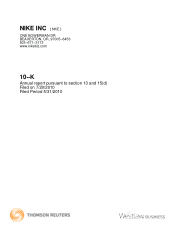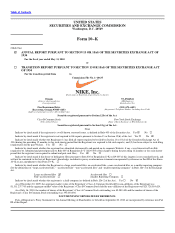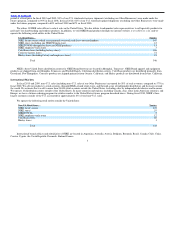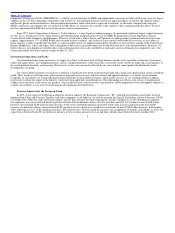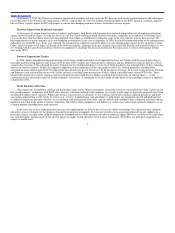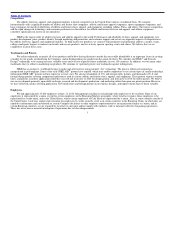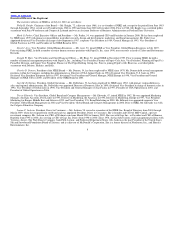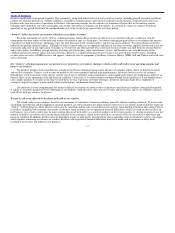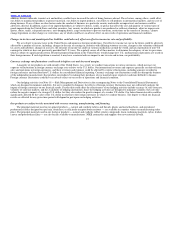Nike 2010 Annual Report Download - page 9
Download and view the complete annual report
Please find page 9 of the 2010 Nike annual report below. You can navigate through the pages in the report by either clicking on the pages listed below, or by using the keyword search tool below to find specific information within the annual report.
Table of Contents
On February 3, 2010, the Chinese government announced it would be seeking to refer the EU decision (both on the original measures and subsequent
review decision) to the World Trade Organization (“WTO”), and on May 18, 2010, the Dispute Settlement Body of the WTO agreed to establish a panel to
rule on China’s claims against the EU with respect to current anti−dumping measures in force for leather footwear exports.
Footwear Imports into Brazil and Argentina
At the request of certain domestic footwear industry participants, both Brazil and Argentina have initiated independent anti−dumping investigations
against footwear made in China. Over the last two years, we have been working in broad coalition with other companies in our industry to challenge these
cases on the basis that the athletic footwear being imported from China (i) should not be within the scope of the investigation, and (ii) does not meet the
legal requirements of injury and price in an anti−dumping investigation. In the case of Argentina, in 2010, the final determination made by the administering
authorities was favorable to us. In the case of Brazil, the administering authorities agreed to impose an anti−dumping duty against nearly all footwear from
China, which we believe will impact all brands in the footwear industry. Although we do not currently expect that this decision will materially affect us, we
are working with the same broad coalition of footwear companies to challenge this decision in domestic Brazilian courts as well as international forums
such as the WTO.
Footwear Imports into Turkey
In 2006, Turkey introduced safeguard measures in the form of additional duties on all imported footwear into Turkey with the goal of protecting its
local shoe manufacturing industry until August 2009. In June 2009, Turkish shoe−manufacturers submitted, and the Turkish Government agreed to review,
a request for extension of the safeguard measures claiming that the rehabilitation process of the local Turkish industry was interrupted due to the continuing
increase of footwear imports. Despite the importers opposition to the continuation of the safeguard measures, the Turkish authorities extended these
safeguard measures until August 2012, but reduced the duty from $3 per pair of footwear to $1.60 per pair of footwear. As a result of this decision, Vietnam
and Indonesia each initiated discussions with Turkey and each is seeking compensation from Turkey, which is possible under current WTO rules. These
bilateral discussions are currently ongoing, and one potential outcome could involve Turkey awarding trade concessions on other products — or the
exclusion from the safeguard measure of certain categories of footwear. A conclusion of the first round of talks between the exporting countries is expected
in September 2010.
Trade Relations with China
China represents an important sourcing and marketing country for us. Many governments around the world are concerned about China’s growing and
fast−paced economy, compliance with WTO rules, currency valuation, and high trade surpluses. As a result, a wide range of legislative proposals have been
introduced to address these concerns. While some of these concerns may be justified, we are working with broad coalitions of global businesses and trade
associations representing a wide variety of sectors (e.g., services, manufacturing, and agriculture) to help ensure any legislation enacted and implemented
(i) addresses legitimate and core concerns, (ii) is consistent with international trade rules, and (iii) reflects and considers China’s domestic economy and the
important role it has in the global economic community. We believe other companies in our industry as well as most other multi−national companies are in
a similar position regarding these trade measures.
In the event any of these trade protection measures are implemented, we believe that we have the ability to develop, over a period of time, adequate
alternative sources of supply for the products obtained from our present suppliers. If events prevented us from acquiring products from our suppliers in a
particular country, our operations could be temporarily disrupted and we could experience an adverse financial impact. However, we believe we could abate
any such disruption, and that much of the adverse impact on supply would, therefore, be of a short−term nature. We believe our principal competitors are
subject to similar risks.
6

